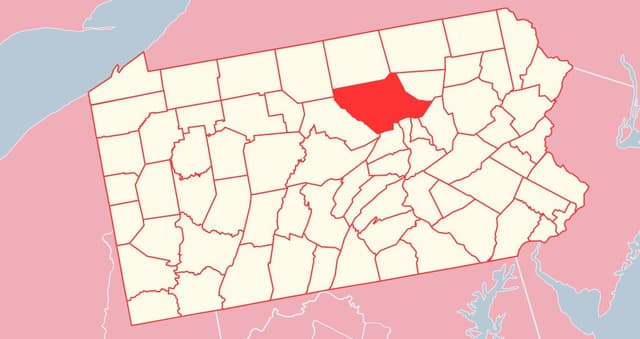
Rehabs in Lycoming
Lycoming County is located in the Commonwealth of Pennsylvania. According to 2010 statistics, it had about 116,000 population. Williamsport is the seat.
Pennsylvania has the third-highest opioid overdoses out of all states. Accordingly, Lycoming faces substance misuse issues.
Substance Abuse Statistics in Lycoming County
According to the Institute for Health Metrics and Evaluation's recent statistics in 2016, there were about 293,000 citizens with functional substance misuse.
The opioid abuse deaths rate is higher than the ones related to alcohol use. In addition, in 2018 there were about 50 opioid pills per 100 people.
There are many rehab centers in Lycoming County for overwhelming habits.
Alcohol and Drug Misuse Level Evaluation
Alcohol and other drugs training and educational programs include assessment. It offers the end of a training schedule and points out areas for improvement.
It provides good examples of safety training by assessing the direct and long-term effects.
Treatment Programs in Lycoming County Rehabs, PA
When an evaluation is finished, the patient starts the treatment. The therapist usually chooses one based on the results of the evaluation and the patient's general health.
Inpatient care, outpatient care, or a partial hospitalization program are the three major types of therapy.
Inpatient
When experiencing care, those who prefer to do so first enter a secure, private place. The focus of everyday actions is on intensive dope and drink treatment schedules.
Moreover, the best candidates for inpatient narcotic therapy are those with harsh and ongoing obsession issues.
Outpatient
The outpatient drug and spirits cure schedules differ from those of inpatient programs. Patients have enhanced mobility with outpatient.
After a daily or evening agenda, participants are free to return home. So it allows them to keep up with their career, and families. In this case, more anonymity and privacy are possible.
Partial Hospitalization Program (PHP)
A partial hospitalization program is an organized day agenda. It offers many therapy sessions and skill-building groups each day for several hours.
The patient will follow a daily schedule in a PHP. However, they will return home each evening. PHPs can last anywhere from one week to six months.
The Costs for Drug and Alcohol Rehabs
The prices for 30 days of detox may be between $250 and $800. The range for three-month outpatient rehabilitation is $1,400 to $10,000.
The 1-month inpatient rehabilitation costs $3,200 to $10,000. Furthermore, for residences cure schedules are $5,100 to $80,000. The costs may vary depending on the provided comforts, location, and time duration.
Luxury Rehabs Costs
People looking for therapy at a cheaper price may find lower-cost treatment facilities to be excellent options. Luxury facilities and privately possessed structures range in price from $26,000 to $100,000 per month, or about $17,400.
Rehabs Without Insurance Coverage
The division takes care of its citizens. For that purpose, it suggests different free rehabilitation for the ones who cannot afford them. People can register and get a free cure. Here are the free rehabilitation centers in Lycoming, PA.
White Deer Run
Valley Prevention Services
CleanSlate Outpatient Addiction Medicine
Williamsport Family Medical Center
Forcing A Teenager Into Rehabilitation
Teens under 18 who are fighting with obsessions can be taken to rehab despite their feelings. If the teen is older than 18, things get more complex. Once a person becomes 18, the law denies pushing them into therapy.
For getting help in rehabilitation, here are two famous hubs in the province:
Bradford Recovery Center focuses on substance abuse, mental health, and mood disorders. They solve issues such as ADHD, anxiety, sadness, concussion, and so on.
Huntington Creek Recovery Center specializes in addiction, medical detox, and substance misuse. They are trying to solve cases such as drinking and drug use, anxiety, coping skills, PTSD, etc.
